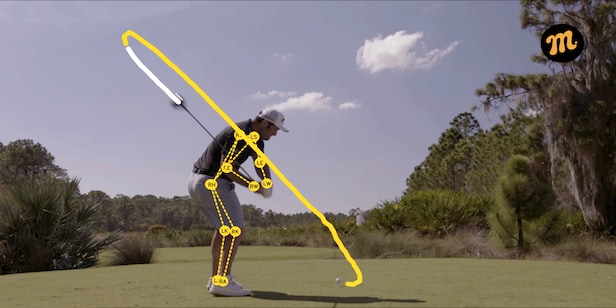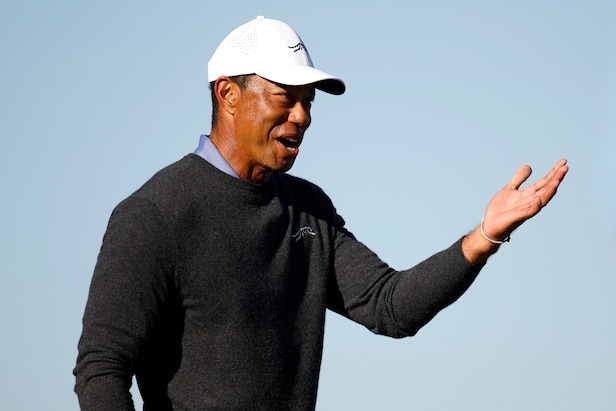Rickie, Justin and Jordan: Was 2024 an inflection point for this trio of stars? – Australian Golf Digest

- by Admin
- December 12, 2024

Embarrassing isn’t quite the right word, but there is something a little … squeamish … about how the golf media treated the phenomenon that was “Spring Break 2016” . If you’re old enough and plugged-in enough, you remember: Justin Thomas, Jordan Spieth, Rickie Fowler and Smylie Kaufman went on vacation and posted some pictures and videos, and for a few days it dominated our little ecosystem. But if I don’t feel entirely comfortable with the absurd levels of attention paid to this quartet by me and my peers, I can’t be too harsh on us: They were having fun, and they were aspirational. They were four cool, likable young men near the top of their game, and to be one of them seemed like a pretty great gig. If we wanted to enjoy it vicariously for a week, why not?
Looking back almost nine years later, you couldn’t have picked a better moment to freeze in time. Two weeks earlier, Kaufman and Spieth went into Sunday at the Masters in the final group, Spieth leading his friend by a shot. While Kaufman shot an 81, and Spieth suffered his infamous 12th hole quad to hand the green jacket to Danny Willett, their stars burned bright. Spieth, of course, had just come off a brilliant 2015, when he won two majors and came close in the two others. Fowler had pulled off the rare feat of finishing top five in every major in 2014, and a year later won the Players, the Scottish Open and a FedEx Cup playoff event. Thomas had come out of Spieth’s shadow by winning his first PGA Tour event the previous fall and had just made the cut in his first Masters appearance. To varying degrees, they were all rising stars. Fowler was 27. Kaufman was 24. Spieth and Thomas were 22.
Time and fate took hold of them. Kaufman’s golf star faded fastest, and today he plies his trade on TV. Spieth and Thomas won majors in the summer of 2017, and Thomas won another in 2022. Fowler went on a long journey that took him to the depths of the game, before emerging reborn courtesy of his old coach Butch Harmon to put together a strong 2023, contending in the U.S. Open and winning his first PGA Tour event in four years. The three of them have played in Ryder Cups and Presidents Cups, they’ve been through highs and lows, and despite their struggles they’ve never gone away.
And yet, there was something about 2024 that felt like an ending … or at least a beginning of an end. Golf is famously unpredictable, and a player’s prime is longer than any other major sport, so it’s far too early to rule anyone out. But consider the results from this past season:
Fowler: Zero wins, one top-10 finish, only three top-20 finishes.
Spieth: Zero wins, three top-10 finishes, none since early April.
Thomas: Zero wins, seven top-10 finishes.
You wouldn’t call this a “bad” season for any of them by reasonable standards—hell, Thomas made the Tour Championship!—but for the first time since their careers began, it felt like all three took a backseat in the popular discourse. They were all less relevant, and it all happened the same year. And for the first time since the 2013 Presidents Cup, the United States played a team event—the 2024 Presidents Cup—without at least one of them on the roster.
In the meantime, new stars have emerged, and old ones have eclipsed them in the spotlight. Rory McIlroy has famously struggled to win another major after his brilliant 2014, but his game has remained elite, and his immersion into the LIV Golf-PGA Tour madness has kept him on the tip of everyone’s tongue. Brooks Koepka rose and fell, but his highs were ultimately higher than the three Americans. Jon Rahm and Bryson DeChambeau have sketched out infamous arcs of their own, courtesy of jumps to LIV Golf, while the relatively quiet Scottie Scheffler has rocketed to the top of our consciousness simply by playing generational golf.
In the face of these stars, Thomas, Spieth and Fowler have seemed to fade by comparison. They’re older now, too; Fowler 35, Spieth and Thomas 31. And it’s hard to tell if what has happened to them is remarkable, considering what their trajectories looked like once upon a time, or if it’s an utterly predictable ebb and flow beholden to the big truths, which are that time affects everyone differently and golf is hard.
It bears repeating that the stories are not over—Thomas’ runner-up finish last weekend at the Hero World Challenge suggests that some off-season speed-training work might have him winning again soon—and that almost every fan and writer is rooting for a resurgence of all three. It also bears repeating that the stories are not the same. The hardest reality for them to face, though, is that the game hasn’t stood still. Golf is not waiting for them to find their old form; it just keeps getting better and younger while the years pass.
And that’s the ultimate surprise when taking stock of where they stand today. The future is unwritten, but what might have seemed like temporary dips nine years ago now look a little more acute, a little more worrisome, a little more permanent. In one sense, it’s like the guard has already changed, but nobody wants to acknowledge it. That’s what happens in a sport where Tiger Woods continues to dominate the discourse even as he approaches 50 (and indeed, in a sport where someone like Woods or Mickelson could still do the unthinkable into their late 40s). The timeline can seem endless, future opportunities limitless.
But for three stars who first captured the sport’s imagination a decade ago, 2024 was more proof that even though the window of a great golf career closes slowly, it is always, with every passing Sunday, closing nonetheless.
This article was originally published on golfdigest.com
The Latest News
-
December 22, 2024Australian cricket team at MCG: Near 60% win record, unbeaten for three years | Cricket News – Times of India
-
December 22, 2024Zheng to skip United Cup, focus on Aussie Open
-
December 22, 20242024 runner-up Qinwen Zheng pulls out of Australian Open lead-in event
-
December 22, 2024Cricket Australia ‘disgraced’ by fans after ’embarrassing’ BBL visual; Sam Konstas flops before potential debut vs India
-
December 22, 2024‘I want to be out there’: Webster’s long wait for Test debut could be over with Marsh’s all-round capability clouded





